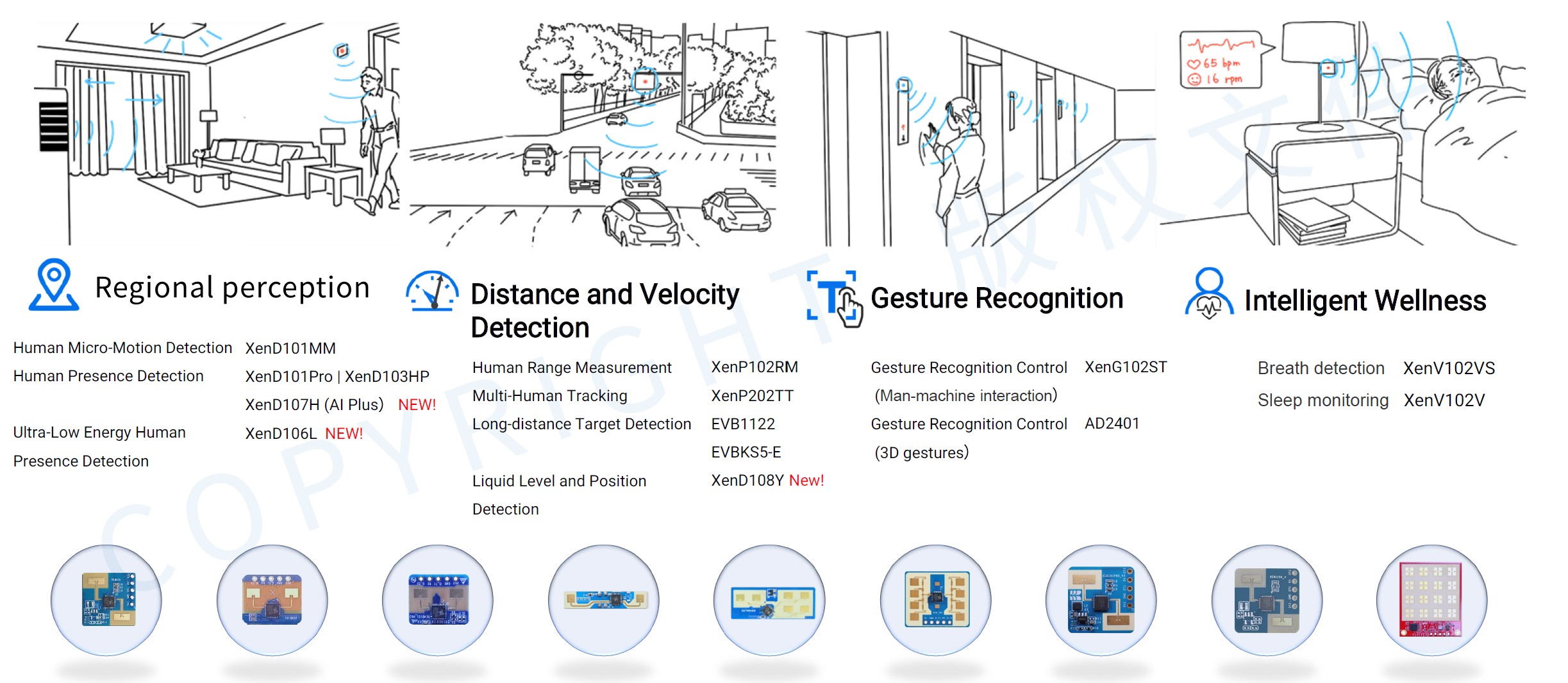
Millimeter-wave sensor technology is based on electromagnetic waves in the millimeter-wave frequency band (30 GHz to 300 GHz). It features high resolution, strong penetration capability, and immunity to environmental factors such as lighting and weather conditions. Millimeter-wave sensors are widely used in autonomous driving, intelligent transportation, industrial automation, security monitoring, and the Internet of Things (IoT). Due to their excellent detection capabilities, millimeter-wave sensors enable high-precision perception, positioning, and identification of objects, making them a key technology for achieving intelligence, automation, and precise control.
Solution Architecture:
The integrated application solution for millimeter-wave sensors primarily consists of the integration of a sensor module, data processing unit, communication module, and external interface system. Through the close collaboration of hardware and software, it provides comprehensive sensing, analysis, and response capabilities.
· Millimeter-wave Sensor Module: Responsible for detecting and sensing the position, speed, and motion state of objects. By interacting with target objects using millimeter-wave signals, it obtains parameters such as distance, angle, and velocity.
· Data Processing Unit: Uses an embedded processor or FPGA to perform real-time processing and analysis of millimeter-wave signals, extracting valuable data and conducting data fusion to provide accurate perception information.
· Communication Module: Transmits processed data to upper-level devices or the cloud for remote monitoring, data storage, and analysis. Common communication technologies include Wi-Fi, Bluetooth, and 5G.
· External Interface System: Connects and interacts with other smart hardware or sensors to form an integrated system, facilitating multi-sensor data fusion and collaborative operation.

Millimeter Wave Sensor Integrated Application Solution